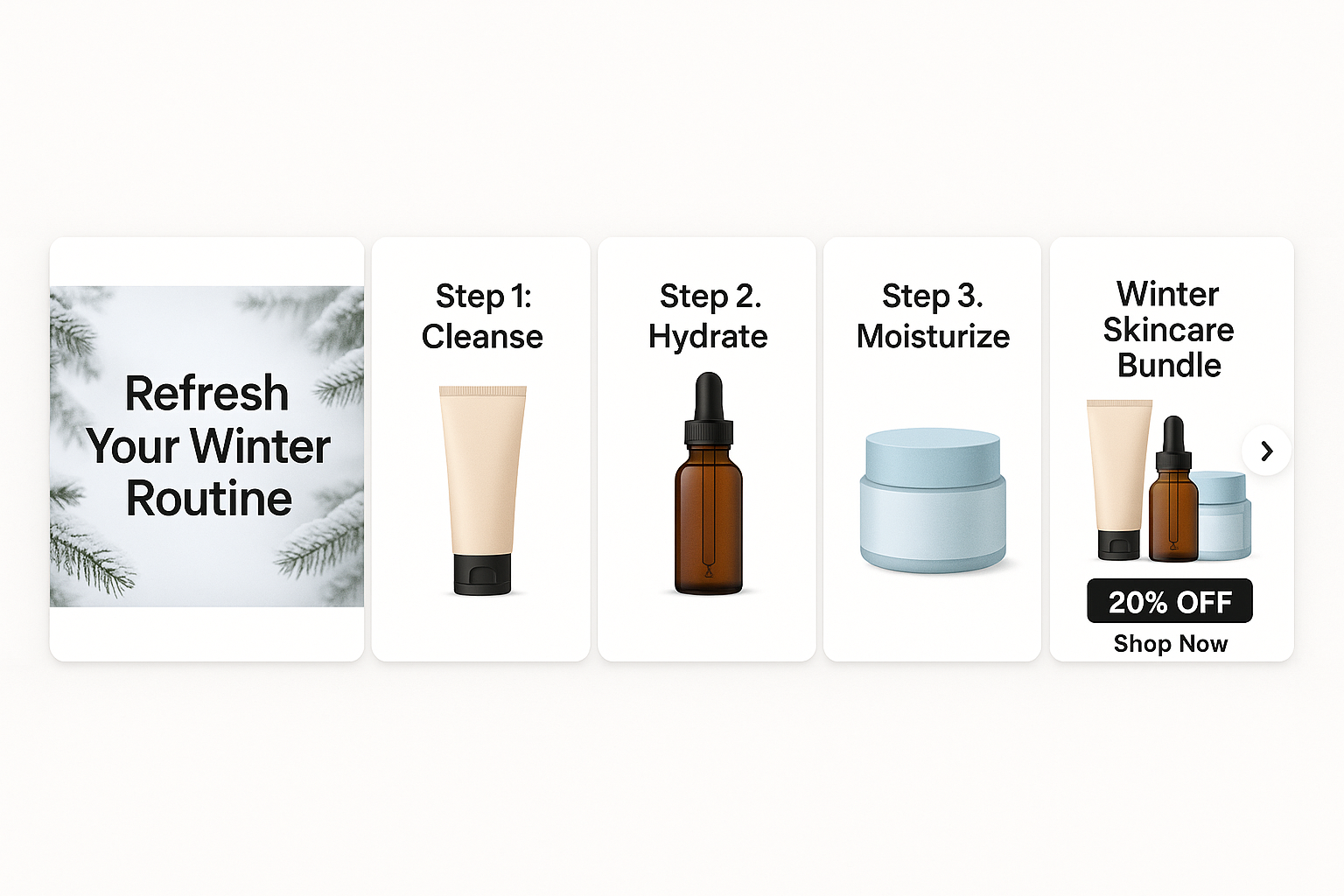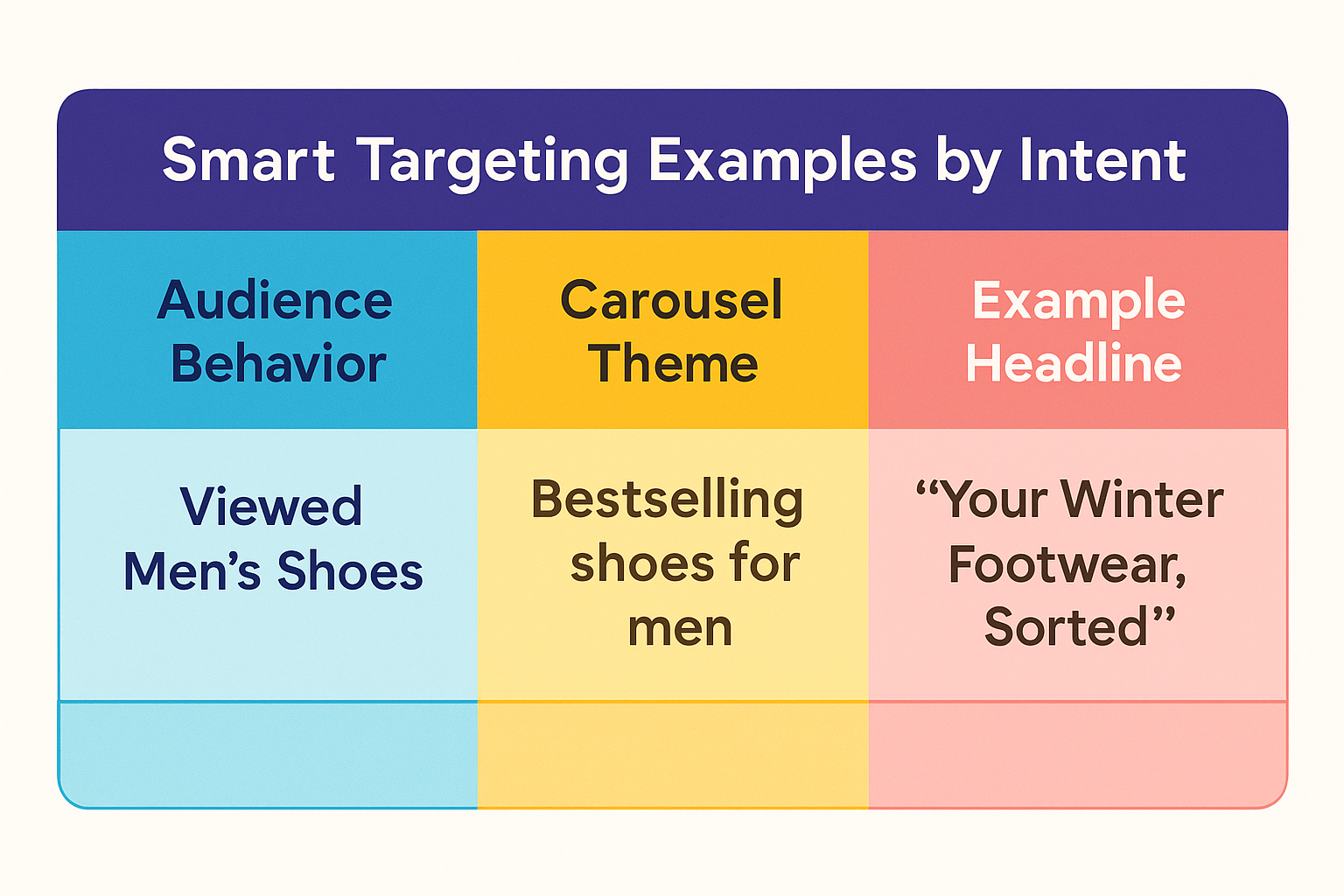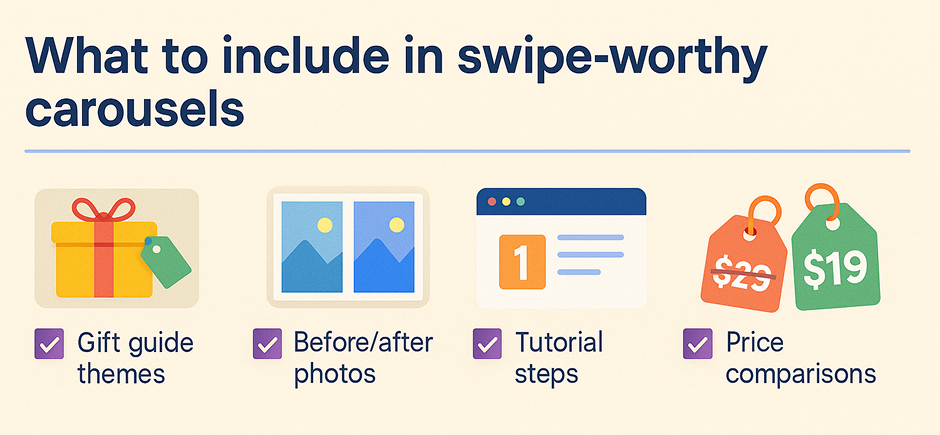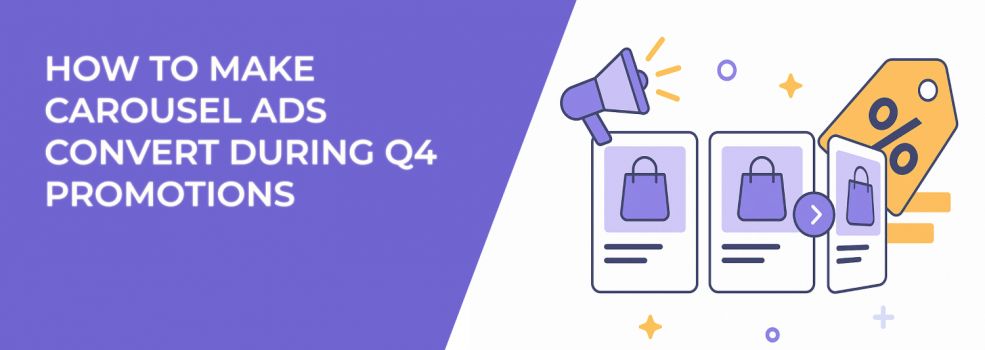Q4 is the most crowded, competitive, and profitable time of year for advertisers.
Everyone’s running a promotion. Everyone’s pushing urgency. Scrolls are faster. Attention spans are shorter. But if you use carousel ads the right way, you can break through the noise and drive serious conversions — not just clicks.
This isn’t just about having pretty product shots. It’s about how you structure the carousel, what you say, and when you say it.
Let’s get into the real strategies that make carousel ads convert during Q4.
1. Don’t Just Show Products — Curate a Journey
The biggest mistake brands make with carousel ads? Treating them like a catalog. Just tossing in five product images doesn’t cut it anymore. Instead, think of each card as a part of a guided experience.

Here’s how that could look for a skincare brand:
-
Card 1: “Your Winter Skin Fix Starts Here” — an eye-catching image of someone applying a cozy face mask.
-
Card 2: “Step 1: Cleanse” — show the gentle cleanser in action.
-
Card 3: “Step 2: Hydrate” — showcase the moisturizing serum.
-
Card 4: “Step 3: Lock It In” — display the night cream and its benefits.
-
Card 5: “Get the Full Set — 30% Off Until Sunday” — call-to-action with a bundle offer.
You’re not just selling products. You’re solving a problem in steps. This is more engaging and easier to follow than a random line-up of SKUs.
Pro tip: name your cards like a checklist. “Step 1,” “Step 2,” “Finish Strong.” It encourages swiping and gives the viewer a sense of completion.
2. Use Intent Signals to Power Your Creatives
Most brands run one carousel ad to everyone. But Q4 is the time to segment smarter.

Here’s how to do it:
-
If someone visited a specific category (like “Men’s Shoes”), show a carousel featuring your bestsellers in that exact category.
-
If someone abandoned their cart, use a carousel to show what they left along with complementary items.
-
If someone watched a gift guide video, hit them with a carousel ad labeled “Top Gift Picks Under $50.”
To make this work, you need clear targeting — and smart segmentation. If you're not confident your ad sets are reaching the right people, revisit Facebook Ad Targeting 101 to strengthen your strategy.
3. Use Creative Contrast Between Cards
People swipe through carousels quickly. To hold their attention, each card should feel visually different from the last.
Try this:
-
Mix product photos with lifestyle images.
-
Alternate between light and dark backgrounds.
-
Use text overlays on some cards, none on others.
-
Add movement using subtle animation or GIF-style cards.
If you need tools to make this easier, check out The Best AI Text and Image Generators — they’ll help you create diverse, swipe-worthy creatives faster.
4. Optimize for the Swipe, Not Just the Click
Clicks are great, but don’t forget that swipes count as engagement too — especially on platforms like Instagram and Facebook.

Here are a few ideas:
-
Mini gift guides.
-
Before and afters.
-
Tutorial sequences.
-
Comparisons.
Even if they don’t click, they’ll remember your brand. Use retargeting to re-engage those viewers smartly — if you're unsure how, follow this step-by-step retargeting guide.
5. Add Text Strategically — But Keep It Snackable
Don’t overload your cards with text. Instead, think about what the user needs to know at that moment.
Use headlines under each card to highlight:
-
Product names or features.
-
Star ratings or short reviews.
-
Simple calls to action like “Get Yours” or “Shop Fast.”
If your ad doesn’t deliver after launching, you may be facing one of the common issues outlined in Facebook Ads Not Converting: How To Fix It.
6. Show the Real Price — Not Just the Discount
It’s tempting to shout “30% Off” everywhere. But people are smart shoppers during Q4.
Instead of just showing the discount, show the price after the discount.
Example:
-
“Was $98 — Now $69.”
-
“Bundle Deal: $120 Value for $85.”
-
“Only $32 — Free Shipping Included.”
This builds trust and removes the mental math.
7. Include Social Proof in at Least One Card
You’ve probably heard this before. But during Q4, timing makes it more powerful.
Ways to include social proof:
-
Star ratings and short testimonials.
-
Customer photos or reviews.
-
“As seen in” media badges.
If you’re unsure how to structure this effectively, take inspiration from this Carousel Ad Structure Guide.
Final Thoughts
Carousel ads are powerful when used with intent.
They’re not just slides — they’re a miniature funnel. With the right targeting, smart creative sequencing, and audience-aware messaging, they can outperform every other format in your Q4 stack.
Want more Facebook and Instagram ad strategies for peak season? Keep exploring Leadenforce’s library of advanced ad techniques.
And remember — every swipe counts.

